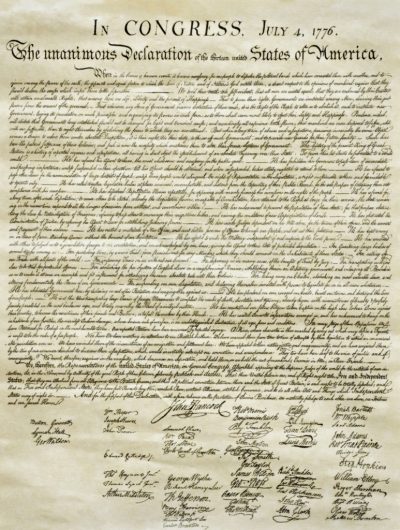
The Society of Biblical Literature (SBL) and the American Schools of Oriental Research (ASOR) held their annual conferences in San Diego the week before Thanksgiving. The Protestant Evangelical Institute of Biblical Research and the American Academy of Religion also met then. Nothing the approximately 10,000 in attendance said or did made the news.
The religious event which made the news was the Gospel according to Rick Perry as revealed through Fox News host Ed Henry to the world.
God’s used imperfect people all through history. King David wasn’t perfect, Saul wasn’t perfect, Solomon wasn’t perfect….And I actually gave the president a little one-pager on those Old Testament kings, about a month ago. And I shared it with him, I said, “Mr. President, I know there are people that say, y’know, ‘You said you were the chosen one.’” And, I said: “You were.” I said, “If you’re a believing Christian, you understand God’s plan for the people who rule and judge over us on this planet and our government.”
These words echo those of other Trumpicans:
Trump campaign manager Brad Parscale: “only God could deliver such a savior to our nation.”
Former White House press secretary Sarah Huckabee Sanders: [God] “wanted Trump to become president.”
Secretary of State Mike Pompeo responding to interviewer Chris Mitchell’s query “Could it be that President Trump right now has been sort of raised for such a time as this, just like Queen Esther, to help save the Jewish people from an Iranian menace?” said: “As a Christian, I certainly believe that’s possible.”
So the Gospel according to Perry is not out of line with the core beliefs of his fellow worshipers.
By coincidence, my own paper during these conferences was “Political Texts of Terror in the Book of Judges.” The paper is about Saul and David and I mention Solomon once. Since Thanksgiving I have been asked by the editor of online The Bible and Interpretation to write an essay of 2,000-3,500 words on my paper for the general public.
With that background in mind, let’s turn to the kings mentioned by Perry.
SAUL
As I am sure Perry knows, Saul was the first person in Israel to be designated a “messiah” or anointed one.
Saul was a warrior; he was not a bonespur boy. He did not pick on women or children or people smaller than him. True he died in battle against the Philistines, but the point here was that fought in the real world against foes who could fight back.
Saul’s Deep State was the Levites represented by the prophet Samuel. He was there to present the law. While not exactly the Constitution, it did provide one key item: only the Levites, priests of Moses, could call Israel to war. Saul did not have the right to initiate a military confrontation without the blessing of Samuel. Scholars debate the historical relationship between the king and the prophet in ancient Israel. One should recognize, as surely Rick Perry does, that in ancient Israel there was a battle of over whether the king was constrained by the law or not. According to the pro-Samuel writers, Saul was bound by the law; according to the pro-Saul writers, Saul did nothing wrong when he acted on his own in the absence of Samuel. Who knew they had Fox and MSNBC in ancient times.
DAVID
David, too, was a warrior in the real world unlike Bonespur Boy. Unlike Saul, David remained successful at it throughout his life although he did have some close calls.
David also could write. He actually was a far greater writer than he is given credit for. He certainly was a far superior writer to the juvenile tweets and 3rd grade letter to Erdogan of Perry’s Lord and Savior, the Chosen One, Blessed Be His Name.
David had to deal with his own famous confrontation with the law. The incident in question is the Bathsheba one. During the incident, the prophet Nathan, from a different priesthood/political-faction than Samuel, said after telling a parable:
THOU ART THE MAN! (II Sam. 12:7 or Two Samuel if you are the chosen one).
Consider now what David did not say in response.
David did not say: “Fake News.”
David did not call Nathan a disloyal traitor.
David did not call Nathan human scum and an enemy of the people.
David did no disparage Nathan as “Little Nathan.”
David did not call Nathan a maniac and deranged human being.
David did not claim Nathan grew up with a complex for lots of reasons that are obvious.
David did denigrate Nathan as a very sick man who lies.
Note: Is it coincidence that Little Donne Waney himself fits his description of Schiff except for the size?
Quite the contrary, David replied that he had sinned before the Lord.
Hard to imagine Perry’s Lord and Savior, the Chosen One, Blessed Be His Name responding as David did.
SOLOMON
Solomon, of course, was not a warrior and is remembered as a builder of the temple among other things. Perhaps the most famous story about him occurs when two women claim to be the mother of the same child. Solomon famously adjudicates the dilemma with the following wisdom:
Kings 3:23 Then the king said, “The one says, `This is my son that is alive, and your son is dead’; and the other says, `No; but your son is dead, and my son is the living one.'” 24 And the king said, “Bring me a sword.” So a sword was brought before the king. 25 And the king said, “Divide the living child in two, and give half to the one, and half to the other.”
It’s not exactly Charlottesville with good people on both sides but it is close enough. The difference is that in the biblical story, Solomon’s pronouncement is a ruse to expose the fraudulent claim while in Charlottesville, the assertion was meant to be taken on face value.
It would be interesting to hear Rick Perry expound on his theological musings. What are the imperfections of Saul, David, and Solomon that he refers to? What did the three kings do in the face of these imperfections? What has Perry’s Chosen One done? I do not have the power to ask Rick Perry to comment. Perhaps someone reading this blog can inquire of him for me.
So which biblical figure is most like our current President? Back on March 19, 2018, I wrote
Is Donald Trump Our Rehoboam? – A Bible Penis Story. If you are interested in my opinion, check out that blog.
In the meantime, it is important to note the ancient Israelite tradition of truth to power even involving the king. There certainly was nothing like that in ancient Egypt. The only person who called Pharaoh to task was Moses and he had to leave Egypt after he did so. But that spirit came to define Israel.
There was nothing like that in ancient Mesopotamia either. There the prophets knew their place and to tell the king what he wanted to hear. Ancient Israel followed the Mesopotamian tradition up to a point. But in the end, Israel was different. Before going into battle even the king needed permission as Saul had not done.
1 Kings 22:5 And Jehoshaphat [the king of Judah] said to the king of Israel, “Inquire first for the word of the LORD.” 6 Then the king of Israel gathered the prophets together, about four hundred men, and said to them, “Shall I go to battle against Ramothgilead, or shall I forbear?” And they said, “Go up; for the Lord will give it into the hand of the king.” 7 But Jehoshaphat said, “Is there not here another prophet of the LORD of whom we may inquire?” 8 And the king of Israel said to Jehoshaphat, “There is yet one man by whom we may inquire of the LORD, Micaiah the son of Imlah; but I hate him, for he never prophesies good concerning me, but evil.” And Jehoshaphat said, “Let not the king say so.” 9 Then the king of Israel summoned an officer and said, “Bring quickly Micaiah the son of Imlah.”
In ancient Israel, they knew to trust not the yesmen who told the king what he wanted to hear but the one who did not. You need to have some adults in the White House!
That spirit of Moses lived on the creation of the United States. The Declaration of Independence was an impeachment of King George III. It is a legal document that indicted the king on multiple counts of an abuse of power. It was written by people who were disloyal traitors to the king and who compounded their disobedience by voting with their guns to remove King George III from power over them. Now we are engaged in battle to determine if the rule of law or a would-be King George will prevail. Where are Moses and David when you need them?







